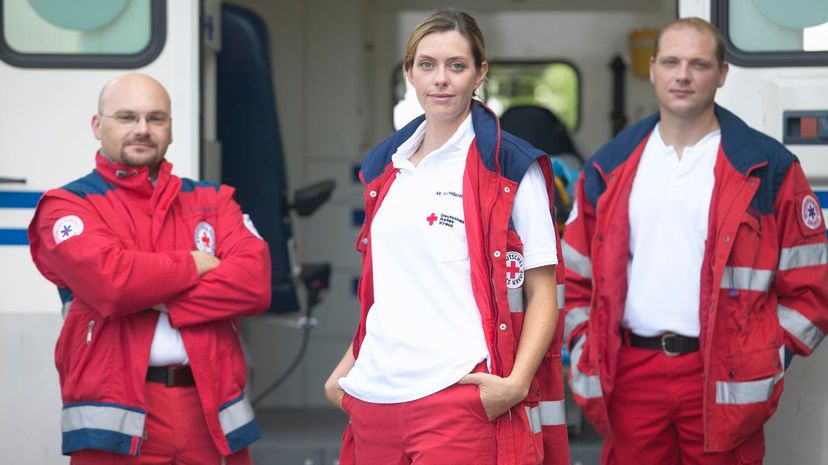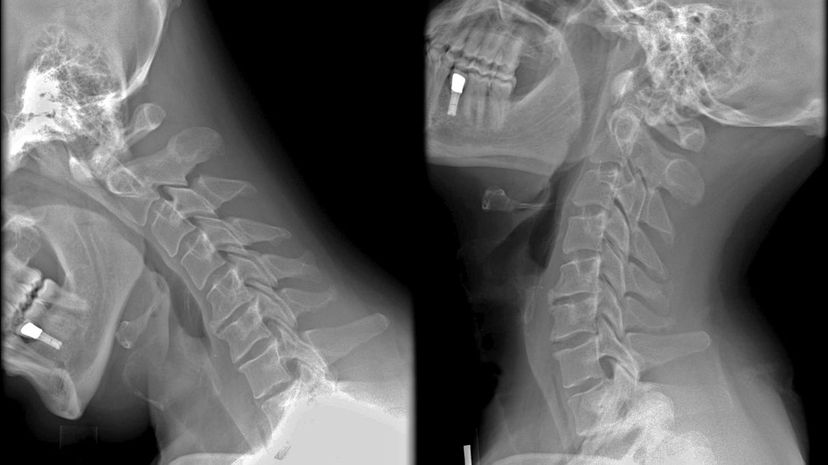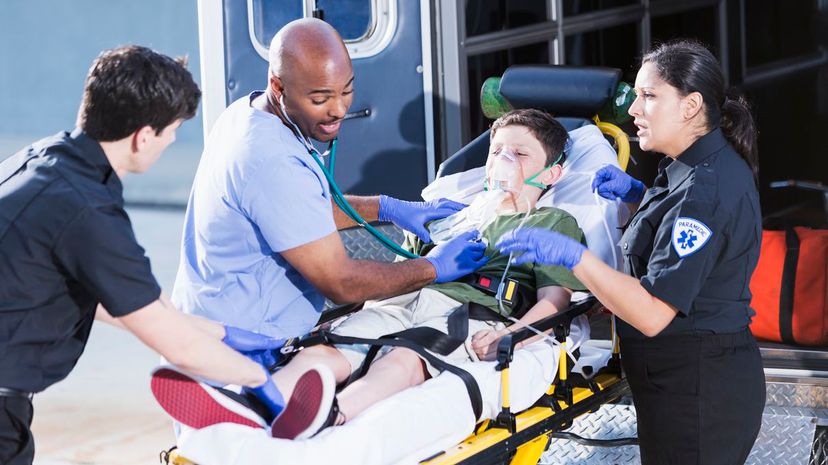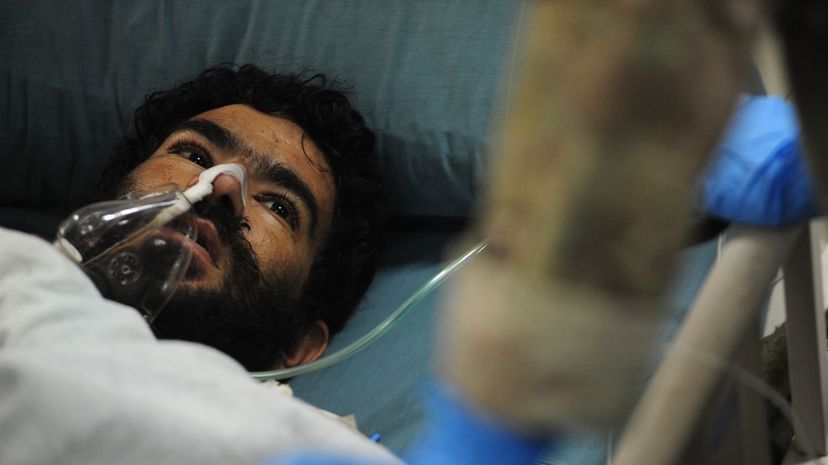
About This Quiz
In any job in the world, you're going to need to get to know the tools and the terms of the trade. Being an EMT is no different, and, in fact, it's likely got more lingo, jargon and vocabulary to nail down than most professions. Jut think about it - have you ever heard a group of medical professionals taking on the job? Half of the terms they use fly right over your head if you've never heard them before because nearly everything they discuss is specialized.
EMTs have to understand several hundred terms that they're likely to use in their day to day lives, and those terms are just as important as the knowledge they need to save lives. After all, without communication, it's hard to coordinate your medical treatment, right? Everything from CPR to pulse oximetry to supraventricular tachycardia are all terms an EMT needs to know right off the top of their head. Every day is bringing them to new patients and new situations that require medical assistance and the vocabulary to describe and treat what they're dealing with properly. An EMT should be able to do it, but what about you? Take the quiz, and we'll see just how good your EMT vocabulary is.

A first responder is the emergency services personnel who arrive first on the scene. That could be an EMT or paramedic, or it could be a police officer or a firefighter as well. The only qualification is getting there first.

ALS is short for advanced life support and can include a range of techniques that expand on the very basics needed to keep someone alive. What does that mean? Things like IV, tracheal intubation, adrenaline shots and more.

Burnout is a serious issue for EMTs and can be manifested in several ways, including on-the-job cynicism, exhaustion, depression, distraction and other stress-related symptoms that affect performance.
Advertisement

CPR stands for cardiopulmonary resuscitation and is one of the most widely known and recognized emergency life-saving techniques in the world. The American Heart Association recommends using the beat of the Bee Gee's song "Stayin Alive" as a guide for timing your compressions.

Ballistic shields, sometimes called covers, are for use in extremely dangerous situations in which there's a chance the EMT might get shot. These are pretty much the same sort of shields riot police might use and are effective against anything from rocks to bottles to gunfire.

CISD or critical incident stress debriefing is a confidential sort of group therapy meeting that an EMT might have to partake in if they've experienced a seriously traumatic on-the-job event. Usually, this has to take place within a couple of days of whatever the event was.
Advertisement

Dependent lividity isn't something that occurs in a living body. It looks like a deep purple bruise that appears on the lowest portion of a body where the blood has settled after death. It's basically caused by gravity.

Triage is what you call ordering patients in terms of medical needs. There's no set triage method around the world, but in general, there are four or five levels that are applied from the lowest urgency to gravest.

Your cervical spine, or c-spine, refers to the first seven bones of your spinal column. While your spine extends all the way down your back, the c-spine is just the part in your neck, and often EMTs will take special care to secure it in the event of an injury.
Advertisement

Many professions require PPE, but for EMTs, PPE or personal protective equipment is the sort of stuff that can help prevent the transmission of infectious diseases. The Occupational Health and Safety Act describes what gear is acceptable in what circumstances.

Rigor mortis is a Latin term that means "the stiffness of death." It's also called postmortem rigidity and is actually the third stage of death after pallor mortis and algor mortis. There are eight stages in case you were wondering. The last one is fossilization, so it's a bit of a process.

Informed consent is what medical professionals generally seek before treatment. It implies that the patient is aware of the potential risks of treatment and has given their permission for the procedure to go ahead.
Advertisement

Usually, you need consent from a person before performing any procedure. But if the person is unable to offer consent, such as an unconscious drowning victim, for instance, it's safe to assume consent for life-saving measures has been implied. Implied consent covers any situation in which someone can't consent but likely would if they could.

Agonal respirations are abnormal breathing patterns that include gasping breaths, labored breathing, and often unusual sounds and muscle twitching. It's very often seen in cases of cardiac arrest.

When you need to refer to a patient as a whole, you don't generally say front, back, left side or right side. The anterior is the front side of the patient you're talking about, and if you wanted to refer to their back, you'd say posterior.
Advertisement

The angle of Louis is also called the sternal angle. You can find it where the second rib attaches to the sternum, and it's used as a landmark to help an EMT or other professionals find the anterior chest wall.

Blood pressure is one of the basic vital signs you'd need to check in any patient. A clergyman named Stephen Hales made the first-ever record of blood pressure all the way back in 1733.

Your body is chock full of arteries that take blood away from the heart throughout the whole body. You have a number of "main" arteries in your body, such as the carotid and femoral, as well as the artery of your arm, which is the brachial artery.
Advertisement

Fowler's position is what you'd call a patient sitting with their back anywhere from 90 to 30 degrees. The knees are bent in front of them, and it's generally used when you're experiencing respiratory distress to help you breathe more easily.

When you're referring to a patient's awakeness, alertness, and awareness, you're referring to their level of consciousness. Obviously, most of us experience a normal level, but there are varying levels of altered consciousness ranging from simple confusion all the way to coma.

Nasogastric intubation is the very technical name for a tube in your nose. It's inserted through the nasal cavity, down the throat, and into the stomach. With a tube in place, food and medicine can be administered to someone unable to swallow them normally.
Advertisement

Your somatic nervous system is the part of your peripheral nervous system that controls your voluntary body movements. That's opposed to the autonomic nervous system, which covers the involuntary parts of your body.

Sometimes called the hypodermis, your subcutaneous tissue is often mostly just fat that's below the skin and works like insulation. Most drugs, like insulin, are injected into this layer because the tissue absorbs things very quickly.

Your pituitary, adrenal, and thyroid are all glands, but your cerebellum most certainly is not. In fact, the cerebellum is part of your brain that receives sensory data and then regulates your motor functions.
Advertisement

Your blood pressure is divided into two parts - the contraction and relaxation. When the left ventricle contracts, the pressure that creates is called the systolic pressure, as opposed to when it relaxes, and you have the diastolic pressure.

Palpation is the examination you can do via touch when it's too noisy to use something like a stethoscope. If you've ever seen someone use their fingers to check a pulse, that was palpation.

EMT-Basic is one of three levels of EMT certification you can attain. Basic is, obviously, the first level. Sometimes called EMT-B, this is the initial certification and covers the most basic skills and abilities. Intermediate would add skills like the ability to administer an IV and such, and paramedic is awarded for advanced pharmacology and other techniques.
Advertisement

A face sheet offers up some basic facts and info about a patient. It can include everything from the patient's name, address and next of kin to some basic medical history and any instructions they may have for their care.

When you need to extricate a patient, you're just removing them from a place. That could either be the back of an ambulance, their own home, or something more serious like a motor vehicle accident.

You can measure how much CO2 is in an exhalation with a measure called EtCO2. Why do you care? A high EtCO2 value means you're breathing well. If it's low, then there's a good chance you're having some issues that need to be further investigated.
Advertisement

When you flatline, you've gone into asystole, and it's pretty much the end of the line for a cardiac arrest even when your heart is no longer contracting at all. This is something you can't shock with a defibrillator because it will accomplish nothing.

Tachycardia, sometimes just called tachy (sounds like tacky), is an elevated heart rate. If your resting pulse is above 100 beats per minute, you're experiencing tachycardia and should probably seek medical attention.

When you use a bag valve mask to help a patient breathe, that's often referred to colloquially as bagging. It makes sense since, for the most part, it looks like you're just squeezing a bag to force air into a patient's lungs.
Advertisement

When a patient is secured to a spinal board, including the use of some kind of neck brace to hold their head steady, that's generally referred to as using a board and collar. It's the go-to method for ensuring an injured patient is secure and immobile.

Defib, or defibrillation, is the process of using an electrical current to treat a life-threatening dysrhythmia of the heart. This can be used for any erratic heart rhythm to try to get it beating normally again, except for asystole or a flatline, which has no rhythm to correct.

An ECG is an electrocardiogram that creates a graph of voltage versus time to measure the electrical activity of a patient's heart. The science s fairly old, and the first ECG machine was created all the way back in 1895.
Advertisement

A carrier of a disease is someone or something that has the disease and can transmit it but doesn't show symptoms. Arguably the most famous carrier in American history was Typhoid Mary, real name Mary Mallon, who may have infected upwards of 51 people with typhoid in the early 1900s.

A foreign body airway obstruction could be either a complete obstruction or just a partial one caused by something in your airway that doesn't belong there naturally. An example is when you choke on a chicken leg or something and need the Heimlich maneuver to fix the issue for you.

A heart attack can cause cardiac arrest, but the two are actually different things. When your heart is unable to pump correctly, that loss of blood flow is what characterizes cardiac arrest. A heart attack is when blood flow slows or even stops to a part of the heart.
Advertisement

A patient suffering from anaphylactic shock is having a serious and potentially deadly allergic reaction. Someone experiencing anaphylaxis needs immediate medical attention, including a shot of epinephrine, which is why epi-pens exist.